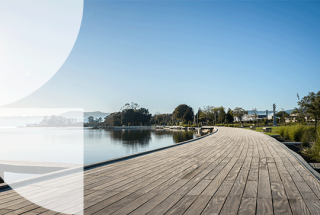Snapshot on Emergency/Social Housing

Snapshot on Emergency/Social Housing
Tuesday 22 November, 2022
Download our Natural & Environment Bill Snapshot here
The effects of emergency and social housing, both positive and adverse, are currently the subject of hot debate in many of our communities.
Amplified by our local and national economies emerging into a post-COVID world and the focus on increasing residential density through a suite of plan changes across Aotearoa to enable greater housing supply and choice. Against this backdrop it is understandable that the Government wishes to limit procedural challenges and delays motivated by NIMBYism.
Sections 108(d), 223(8)(e) and 512(1)(c) of the Natural and Built Environment Bill proposes to prohibit the plan making, resource consent application and notice of requirement processes respectively, in consideration of adverse effects arising from the use of land for activities such as emergency, transitional, community or social housing.
The same prohibition fetters the considerations of Boards of Inquiry under clause 19(2)(c) in Schedule 6 and Independent Hearings Panels under clause 126(2)(c) of Schedule 7.
While consideration of the positive effects of such land uses can take place, the Bill does not allow any person performing decision making or recommendation roles to have regard to any adverse effect arising from the use of the land by:
- people on low incomes;
- people with special housing needs; or
- people whose disabilities mean that they need support or supervision in their housing.
The Bill does not define ‘low income’, ‘special housing needs’ or ‘support or supervision in housing’. In the absence of these statutory definitions, years’ worth of judicial interpretation looms large on the horizon if parties are left trying to work out whether a particular recommendation or decision overstepped the line between what the eventual Act said they could and could not have regard to.
However, of greater concern is the fact that the Bill’s current approach would not allow or enable the transparent and objective assessment and management of adverse effects arising from these land uses through plan provisions or conditions.
Having recently worked through a seven-day hearing with a consent authority client to consider and decide resource consents for 13 emergency housing sites, it is sobering to reflect that the complex adverse effects resulting from this land use had the potential to not only impact the surrounding community, but also impact vulnerable emergency housing occupants themselves.
The assessment by professional expert witnesses of basic needs such as provision for adequate play space for children, management of crowding and provision for personal safety and wellbeing is at risk of being lost through Government denying the consideration and regulation of these matters when recommendations and decisions are made.
One alternative approach, which could both address Government’s desire to constrain NIMBYism without constraining the assessment and management of these adverse effects, could be to restrict standing to appeal such matters rather than restrict the important assessment and consideration of them in the first place.
There are bound to be other alternative approaches, which could ensure that the purpose of the proposed NBA, in this context, to enable use of the environment in a way that manages adverse effects, is achieved rather than ignored.
While we await confirmation of the closing date for submissions on the Natural and Built Environments Act ('NBA'), we welcome your comments and observations on NBA.
We have a team of experts here to help if you would like to prepare and lodge a submission.







